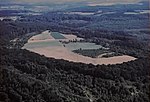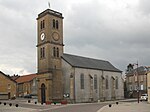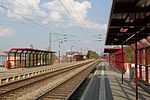Lasauvage

Lasauvage (Luxembourgish: Zowaasch) (German: — notionally only — Rohrbach) is a small town in the commune of Differdange, in south-western Luxembourg. Lasauvage was known as one of the few French-speaking towns in an otherwise Luxembourgish-speaking country. Unlike many German alternatives to place names in Luxembourg, Lasauvage's German equivalent, Rohrbach, has been little-used because of its perceived Nazi associations. Shortly before the Second World War, there were plans drawn up by the Luxembourg government for Grand Duchess Charlotte to reside in Lasauvage, given its proximity to France, which would enable her to escape over the border easily, but they did not come to fruition.
Excerpt from the Wikipedia article Lasauvage (License: CC BY-SA 3.0, Authors, Images).Lasauvage
Calle del Labrador, Madrid Arganzuela (Arganzuela)
Geographical coordinates (GPS) Address Nearby Places Show on map
Geographical coordinates (GPS)
| Latitude | Longitude |
|---|---|
| N 49.516666666667 ° | E 5.8333333333333 ° |
Address
Calle del Labrador
28012 Madrid, Arganzuela (Arganzuela)
Comunidad de Madrid, España
Open on Google Maps










